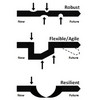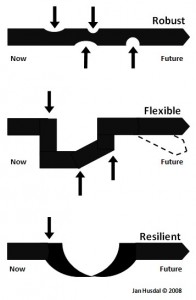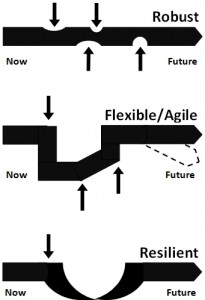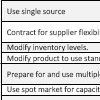 Is what I am doing worthwhile? Is anybody reading and using what I write? Am I contributing to a broader and/or better understanding of supply chain risk and (transport) vulnerability? After more than a decade of blogging and researching I think those are legitimate questions to ask. More than anything, am I making an impact…at all? For many of us researchers that is an important question, because, after all, we do hope that someone picks up our ideas.
Is what I am doing worthwhile? Is anybody reading and using what I write? Am I contributing to a broader and/or better understanding of supply chain risk and (transport) vulnerability? After more than a decade of blogging and researching I think those are legitimate questions to ask. More than anything, am I making an impact…at all? For many of us researchers that is an important question, because, after all, we do hope that someone picks up our ideas.
Robustness and Flexibility 2004
One concept that I have found cited more recently is what started out 11 years ago in 2004 as a university course paper on flexibility and robustness as options to reduce risk and uncertainty. In hindsight, it is not a paper I am particularly proud of, but it was the starting point for an illustration that later became the core idea of much of my work.
Admittedly, not the best illustration, but the idea was to show that robustness means enduring and withstanding changes in the environment without severe impact, while flexibility means reacting to and adapting to the same changes, while not deviating from the target.
Robustness, Flexibility and Resilience 2008
Some years later in 2008 I added resilience to the concept, thinking I now had the whole picture, and once and for all – or so I thought – defined what robustness, flexibility and resilience are about:
The idea here was to show that robust means staying on course, despite being buffeted from both/many/all sides. Yes, there are impacts, but they do not severely hamper reaching the target. In this picture flexible means reacting to environmental circumstances and changing course or even the target without reducing performance. Resilient is coming back to where we were after suffering a blow or setback.
Risk Management in Logistics 2009
This clear distinction between these terms was apparently good enough to earn me a place in a Dutch book titled Risicomangement en Logistiek (Risk Management in Logistics):
The picture is slightly skewed, but is still the same as the original.
Robustness, Flexibility, Agility and Resilience 2009
Later, after gaining more insight in 2009, I added agility to the same concept, and I now had what I thought to be the best possible illustration of robustness, flexibility, agility and resilience, defining all four concepts in one:
Here I differentiated between flexibility and agility by saying that flexibility meant reacting to environmental changes in an expected and preplanned manner, while agility implied reacting in an unexpected and unplanned (creative) manner.
Robustness, Flexibility, Agility and Resilience 2010
That complete concept was published in 2010 in my book chapter on A Conceptual Framework for Risk and Vulnerability in Virtual Enterprise Networks, and included a lengthy discourse on the literature for all four terms:
While I not stated it explicitly, the definitions read like this
- Robustness is the ability to endure foreseen and unforeseen changes in the environment without adapting.
- Flexibility is the ability to react to foreseen and unforeseen changes in the environment in a pre-planned manner.
- Agility is the ability to react to unforeseen changes in the environment in an unforeseen and unplanned manner.
- Resilience is the ability the ability to survive foreseen and unforeseen changes in the environment that have a severe and enduring impact.
All four are linked, all four are important in risk management, but they all put different weight on what should be the focal point.
Dissemination
No longer a part of academia, I have little means of disseminating my ideas, but I am glad to see that my rather lengthy discourse on the difference between this terms in the book chapter has struck a cord with a number of recent publications on supply chain risk and resilience:
- Dealing with supply chain risks: Linking risk management practices and strategies to performance
- The influence of relational competencies on supply chain resilience: a relational view
- Developing an analytical framework to assess the uncertainty and flexibility mismatches across the supply chain
- Negotiation Support for Co-Design of Business Services
The two first are co-authored by Andreas Wieland, on of my Linkedin connections and perhaps the biggest proponent of my aforementioned concept so far.
What does the future hold?
I don’t know what will happen next. In any case, the answer to the initial question “Am I making an impact?” is, surprisingly, Yes.
Reference
Husdal, J. (2010) A Conceptual Framework for Risk and Vulnerability in Virtual Enterprise Networks. In: S Ponis (Ed.)(2010) Managing Risk in Virtual Enterprise Networks: Implementing Supply Chain Principles. Hershey: IGI.
Related links
- researchgate.net: A Conceptual Framework for Risk and Vulnerability in Virtual Enterprise Networks (including number of citations)
Related posts
- husdal.com: Flexibility and Robustness
- husdal.com: Robustness, Flexibility and Resilience
- husdal.com: Book Review – Risk Management in Logistics
- husdal.com: Robustness, Flexibility, Agility and Resilience

















